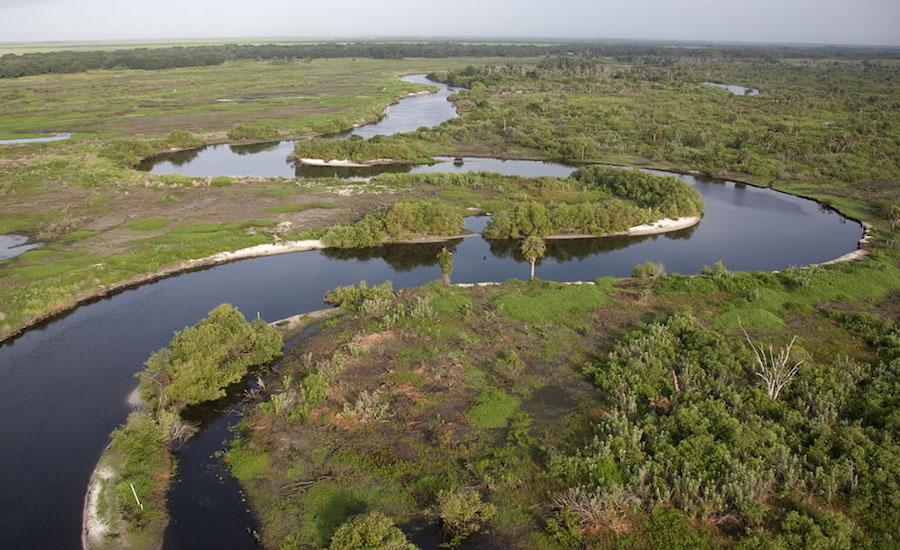Corps Spells Out Billions in Infrastructure Act
View SourceCorps Spells Out Billions in Infrastructure Act Allocations

Plan includes $1.1 billion for Everglades restoration projects.
(Photo courtesy of U.S. Army Corps of Engineers Jacksonville District.)
January 19, 2022
KEYWORDS Army Corps of Engineers / Everglades Restoration / Infrastructure Investment and Jobs Act / locks and dams / port dredging
Order Reprints
The Army Corps of Engineers has released a detailed project-by-project breakdown outlining how it plans to spend the 2022 portion of the $17.1-billion infusion provided for its civil works program in the Infrastructure Investment and Jobs Act (IIJA).
The much-awaited “spend plan,” which the Corps released on Jan. 19, contains funding to start some new construction projects, accelerate work on others and provide enough money to bring another set of projects to completion.
Of the total, $7.4 billion will go for projects in fiscal year 2022 under the Corps civil works construction account. [View construction account breakdown here.] That includes funding to start 22 new construction projects and complete funding for 19 others. The funding is in the form of appropriations.
The largest line-item by far in the spend plan is $1.1 billion for ecological improvements in the Everglades, through the long-running South Florida Ecosystem Restoration program.
Rep. Debbie Wasserman Schultz (D-Fla.), said in a press briefing that the plan provides “massive funding for a huge tranche of [Everglades] projects that have been stalled for many years."
Congress authorized the program in 2000. Its total cost is estimated at $23.2 billion, according to a Sept. 28, 2021, Congressional Research Service report.
Other major construction allocations in the Corps spend plan are for several lock and dam replacements on rivers and in the Great Lakes. The largest is $857.7 million to complete construction at the Montgomery Locks and Dam on the Ohio River in western Pennsylvania
The plan, which Congress mandated in the IIJA, also includes $732 million to complete design and construction of a replacement for Lock and Dam 25 on the upper Mississippi River at Winfield, Mo. Another allotment is $466 million to complete and close out a project to build a new Kentucky Lock on the Tennessee River.
Also on the list is $478.9 million to complete and close out a replacement-lock project at Sault Ste. Marie in Michigan.
Gary Loew, a senior adviser with water resources consulting firm Dawson and Associates, said in an interview that all of the projects in the plan are already in the Corps pipeline at some stage of development, adding that he expects movement on projects soon.
Loew, a former chief of the Corps civil works program's integration division, says, “There’ll be some contracts advertised in the next month and … some in three months and some in six months.”
He adds, “Money won’t be the issue. The only issue now is for the [Corps] districts to move through engineering and contracting into construction as quickly as they can.”
John Doyle, special counsel with law and lobbying firm Jones Walker LLP, said other things contractors should watch for include what contracting mechanisms the Corps will decide to use on various IIJA projects.
“Are we going to see a number of design-build contracts for these projects where the money will be obligated in one fell swoop?” wonders Doyle, a former top Army civil works official. “Are we going to see base contracts, with options, to spend the money out gradually over time, as specific elements of projects that need to be sequenced and built?”
The funding plan also dovetails with overarching priorities of the Biden administration.
Michael L. Connor, assistant secretary of the Army for civil works, said in a statement that the funding will “strengthen national supply chains through our commercial navigation mission, help communities impacted by climate change to increase their resiliency, advance environmental justice and invest in communities that have too often been left behind.”
Besides the IIJA breakdown, the spend plan also provides details for allocating $5.7 billion that the Corps received in a disaster-relief appropriations measure enacted last Sept. 30.

